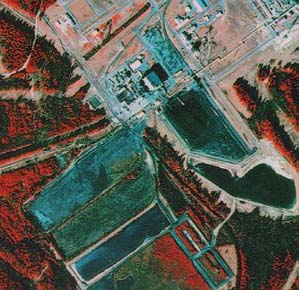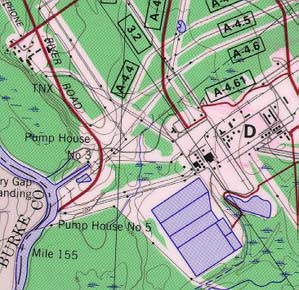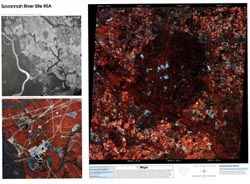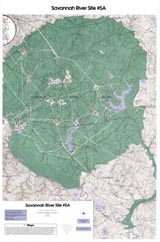 |
||||
Savannah River Site |
|
Portion of NAPP infrared photograph of Ellenton Area of Savannah River Site (1994).. |
Portion of topographic map of Savannah River Site (1987). |
Savannah River Site (NAPP) |
Savannah River Site (Topo) |
RationaleThe Savannah River Site is a 300 square mile region of restricted access in the Coastal Plain of South Carolina that was chosen by the U.S. Atomic Energy Commission in the early 1950’s to be the primary manufacturing site for the government’s atomic weapons program. The original facilities produced plutonium-239 and tritium for the nation’s defense needs. As a result of this highly unusual and unique land use, a variety of hazardous materials, including radionuclides, volatile organic compounds, and trace metals, have been stored or disposed of on site. Over the last decade, under direction from the U.S. Department of Energy, the primary role of this facility has shifted from nuclear materials production to waste management and environmental restoration. Groundwater contamination is a continuing concern in this area due to the porous nature of some of the Coastal Plain geologic formations and the presence of buried faults. Areas of restored habitat are important test sites for demonstrating the use of advanced technology to clean up pollution. |
Background InformationDescription of Landforms
Influence of Topography on Historical Events and Cultural Trends
Natural Resources, Land Use, and Environmental Concerns
|




